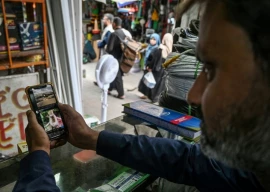
KARACHI/TANDO ALLAHYAR: Every time a new roof is set on the mud walls of a house in Mohak Sharif, 15 household members clamber on top of it and test it. This has become a new tradition in the village where the Heritage Foundation has been helping people rebuild their homes, smarter, greener and safer.
While the rehabilitation has included strengthening mud walls, the key to preparing these homes for the next flood is the Karavan Roof. The foundation already knows it works because of a successful trial of 300 houses in Swat where they held loads of up to three feet of snow.
Thus, within 12 days of the team’s arrival in Mohak Sharif, 22 houses for widows, orphans and the elderly were completed with each costing barely Rs16,000. Now, when the next floods come, the families will stay safe on their roofs along with their household goods and food rations. They will not be wading in water in search of shelter or living in displaced tents by roadside camps. This effort is part of the Heritage Foundation’s goal to find solutions for disaster-risk reduction and resistance for communities. Its initial surveys of traditional house typologies in eight districts of Sindh, supported by the International Organisation of Migration, have yielded rich results.
During the extensive surveys, it became clear that after the 2010 floods, the use of steel girders was promoted along with some other urban-style construction methods. This approach belittled the beautifully modulated traditional structures made of mud and reed and shattered the confidence of communities who assert that skills and centuries’ old knowledge has become redundant.
The people were given the message that their structures would only stay safe if they used cement concrete, steel or burnt brick. But because of the high construction cost and delivery through contractors, only about 8% of the 2010 flood survivors in Sindh could be provided shelter. And then, these very structures, which were believed to be strong, actually failed in the floods this year as the displacement of thousands of families proves. These roofs cost over Rs150,000.
Contrary to common belief, our findings show that mud walls have been particularly flood resistant. The problem is not usually the walls but the roofs, which in spite of being built with the much favoured steel girder, cause great damage to the supporting walls.
The Heritage Foundation is thus now promoting the use of improved traditional and vernacular methodologies. Scientifically built bamboo safe haven roofs are the cheapest, safest, fastest and the most appropriate option. Sustainable ‘green’ materials, ie, local earth for walls, bamboo and reeds in roof construction, along with lime or mud plaster are used to make the walls and roofs strong and weather resistant. This method yields a roof that is at least ten times stronger than those built conventionally.
The writer is CEO of Heritage Foundation of Pakistan, a cultural and social entrepreneur organization established in 1980
Published in The Express Tribune, November 30th, 2011.


















































COMMENTS
Comments are moderated and generally will be posted if they are on-topic and not abusive.
For more information, please see our Comments FAQ